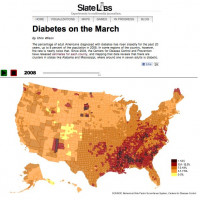If you could make a map showing the impact of food price spikes in different countries around the world, it could be a great tool to teach people about hunger and inspire them to do something about it.
That is what Oxfam is betting on with their new interactive map showing locations in the world where food price hikes are affecting local populations.
And while I like the idea, and Oxfam, the map is not all that it could be.
My main criticism is that the information on the map is sparse and limited, while more thorough data exists and could be utilized. By using other sources, say from the World Food Program’s special issue on Prices and Food Security, the map could more comprehensively explain the issues related to food price spikes in the Horn of Africa and the world. Crowd sourcing, or even official documents like the WFP report above could also outline more specifically what is happening on the ground, and could make wonderful fodder for a more sophisticated visualization on food and hunger.
Perhaps the map works well for Oxfam’s purposes – to engage potential donors and activists. But for techies and journalists (hackers and hacks), this is just the beginning of what a map like this can do. Let’s use there visualizations to tell a more comprehensive and compelling story.
[For more on food prices around the world, also see Food commodities prices surge from the Financial Times]


![[Infographic] Growing the Home Food Gardening Movement](https://foodtechconnect.com/wp-content/uploads/2014/08/Screen-shot-2014-08-08-at-11.57.40-AM-200x200.png)


